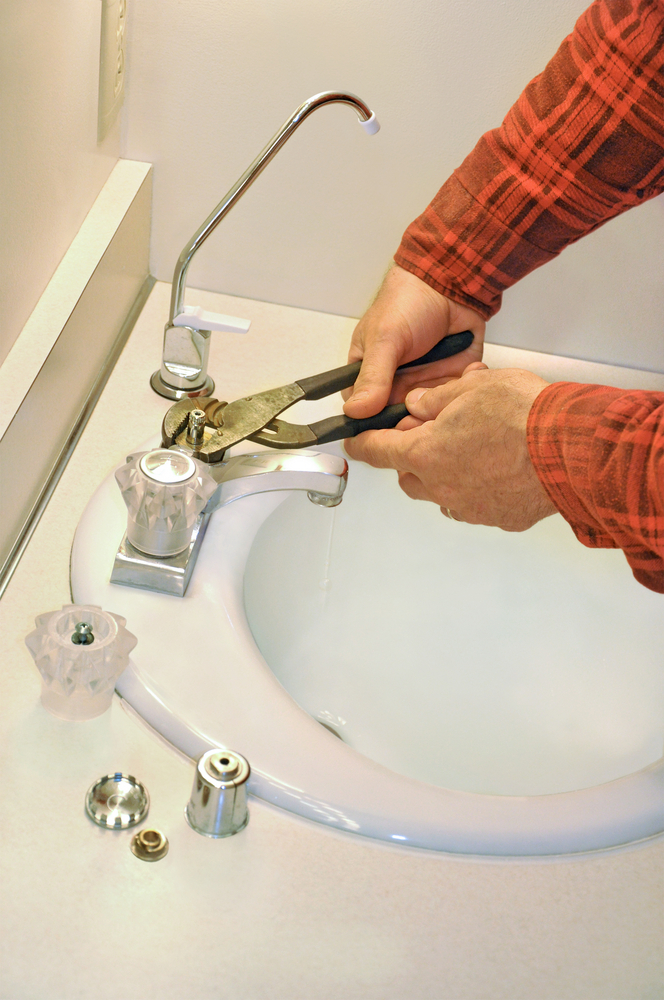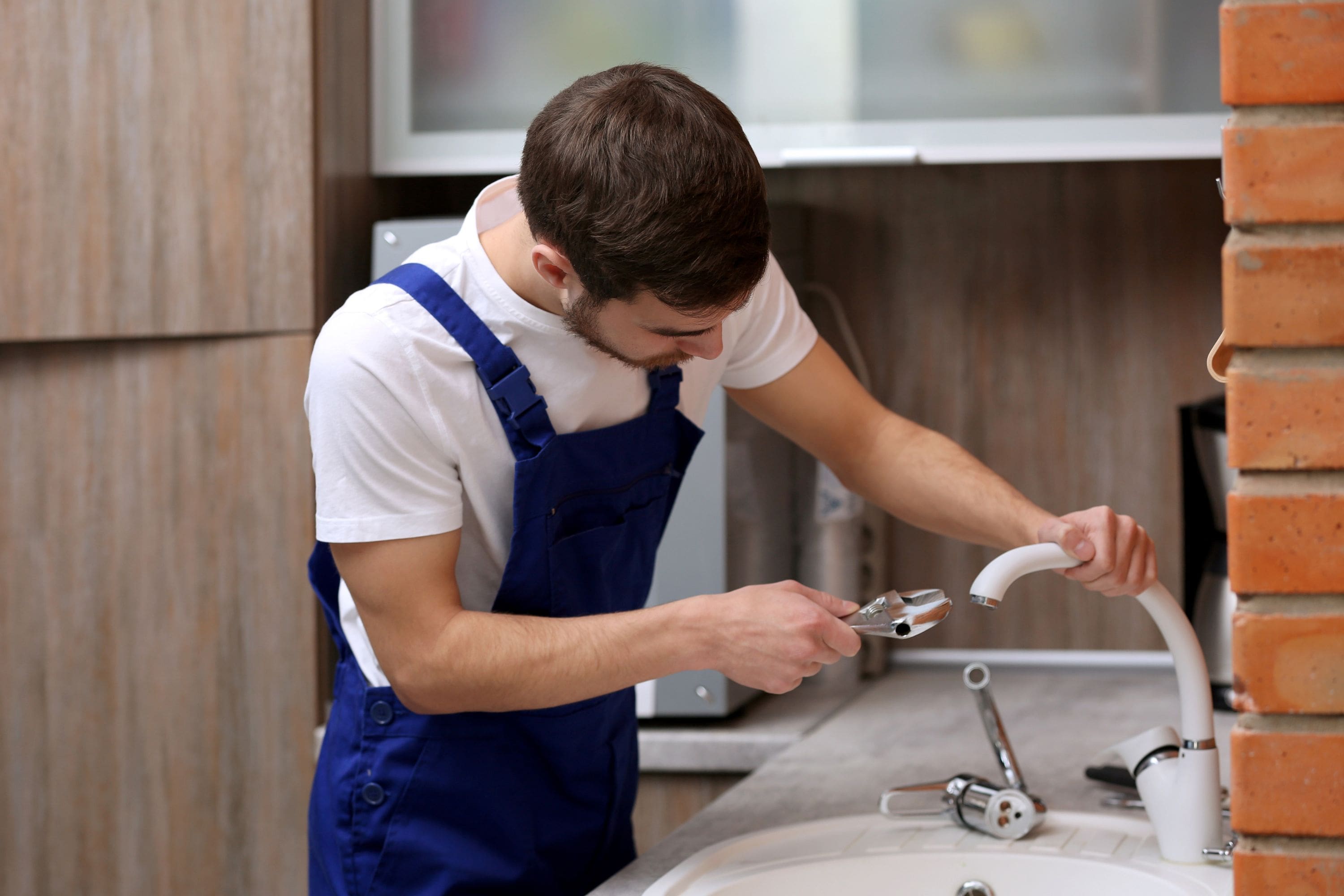An Importance of Resolving a Malfunctioning Faucet
An Importance of Resolving a Malfunctioning Faucet
Blog Article
Any individual has their own individual thinking when it comes to What Causes Leaky Faucets & How To Fix Them.

Trickling taps may look like a small aggravation, however their impact surpasses simply the inconvenience of the noise. From wasting water to sustaining unnecessary economic expenses and health risks, neglecting a trickling tap can lead to various effects. In this article, we'll delve into why it's crucial to address this common household issue quickly and efficiently.
Waste of Water
Environmental Effect
Dripping faucets contribute dramatically to water wastage. According to the Environmental Protection Agency (EPA), a single faucet leaking at one drip per secondly can throw away more than 3,000 gallons of water each year. This not just pressures water sources yet also affects communities and wildlife based on them.
Step-by-Step Overview to Repairing a Dripping Tap
Tools Called for
Prior to attempting to take care of a trickling faucet, gather the essential tools, including an adjustable wrench, screwdrivers, substitute components (such as washing machines or cartridges), and plumber's tape.
Common Faucet Issues and Their Solutions
Determine the kind of tap and the details concern creating the drip. Usual problems include worn-out washers, corroded shutoff seats, or damaged O-rings. Describe producer directions or on the internet tutorials for step-by-step guidance on repairs.
Financial Costs
Raised Water Bills
Past the ecological effect, dripping taps can pump up water bills substantially. The accumulated wastefulness in time converts into greater utility costs, which might have been prevented with timely repair work.
Potential Property Damage
In addition, prolonged leaking can bring about damage to fixtures and surface areas bordering the faucet. Water buildup can create staining, corrosion, and even architectural problems if left unattended, causing additional repair work costs.
Health Issues
Mold and Mold Growth
The continuous presence of wetness from a trickling tap develops an optimal atmosphere for mold and mildew development. These fungi not just endanger interior air high quality but also posture health risks, specifically for people with breathing conditions or allergic reactions.
Waterborne Illness
Stationary water in dripping taps can end up being a breeding ground for germs and other virus, enhancing the risk of waterborne conditions. Contaminants such as Legionella microorganisms thrive in stationary water, possibly resulting in major health problems when ingested or inhaled.
Do it yourself vs. Specialist Repair work
Benefits and drawbacks of DIY Repair Service
While some might attempt to repair a leaking tap themselves, do it yourself fixings include their own set of difficulties. Without appropriate expertise and devices, do it yourself efforts can aggravate the concern or bring about insufficient fixings, lengthening the trouble.
Advantages of Working With an Expert Plumber
Employing an expert plumber ensures that the underlying cause of the trickling faucet is attended to efficiently. Plumbings have the know-how and devices to detect and repair tap problems successfully, saving time and lessening the danger of additional damages.
Ecological Obligation
Specific Payment to Conservation
Taking duty for fixing dripping faucets straightens with more comprehensive efforts toward water conservation and ecological sustainability. Every person's actions jointly make a considerable effect on maintaining valuable sources.
Sustainable Living Practices
By prioritizing punctual repairs and embracing water-saving routines, people add to sustainable living methods that profit both existing and future generations.
Safety nets
Normal Upkeep Tips
To stop dripping taps, perform routine maintenance such as cleaning up aerators, evaluating for leaks, and replacing worn-out parts quickly. Furthermore, think about setting up water-saving devices or updating to extra effective fixtures.
Significance of Prompt Repair Works
Dealing with leaking taps as quickly as they're observed avoids further water wastefulness and possible damages, eventually saving both water and cash in the long run.
Influence On Home Value
Understanding of Well-Maintained Residential Property
Keeping a building in good condition, including resolving maintenance problems like dripping faucets, improves its perceived worth and charm among potential purchasers or renters.
Impact on Resale Value
Features with well-maintained plumbing fixtures, including taps, command greater resale values in the property market. Resolving leaking faucets can add to a positive impact throughout residential property inspections and negotiations.
Conclusion
Dealing with a dripping tap surpasses simple benefit; it's a necessary action toward preserving water, reducing financial costs, and safeguarding health and residential or commercial property. Whether with DIY repair services or professional aid, doing something about it to deal with trickling faucets is a small yet impactful means to advertise responsible stewardship of sources and add to a much healthier, a lot more sustainable future.
How to Fix a Dripping or Leaky Faucet
A leaking faucet is one of the most common problems that homeowners encounter, but it being commonplace doesn’t make it any less annoying. The constant drip drip drip of a leaking bathtub faucet, showerhead, or sink tap can disturb your home’s serenity. Left neglected, a dripping faucet can also result in higher water bills and discoloration or mold growth in your sink or plumbing fixtures.
Fortunately, you don’t have to be a trained plumber to know how to stop a dripping faucet. With some basic tools, replacement parts, and a little patience, leaky faucet repair is a breeze. In this article, we’ll explain what causes dripping faucets and how you can fix them.
What Causes a Leaking Faucet?
Kitchen and bathroom faucets come in all manner of designs, but most involve some combination of valves, O-rings, seals, and washers. The O-ring is usually the weakest link, but any one of these pieces can wear down over time. Heat, moisture, temperature fluctuations, minerals, mold, and movement can contribute to warping and corrosion, breaking the watertight seal. This just comes with the territory of being a homeowner. Everything is always subject to wear and tear, and some component parts of your appliances and fixtures need to be replaced on occasion. At least replacement O-rings are cheap!
More rarely, dripping faucets can be a symptom of excessively high water pressure. Were this the case in your home, you would probably notice that the leak is not isolated to one faucet. Water pressure issues are harder to resolve on your own. We recommend contacting a professional plumber if you suspect your water pressure is too high.
How to Fix a Dripping Faucet
Pipe wrench or monkey wrench Allen wrench set Screwdrivers Old towel or rag Shut off the water.
Before you do anything, you need to turn off the water to keep from drenching your kitchen or bathroom. You should find a valve under the sink and against the wall. Once you’ve turned this valve, try turning the faucet on to confirm that the water source has been cut off.
If you can’t locate your local valve for the faucet you’re working on, you can always shut off the water to the house at the main valve. Of course, this will prohibit anyone from using the sinks, showers, or toilets while you’re working on the faucet that’s giving you trouble.
Plug or block the drain.
You’ll be disassembling the faucet and removing some small bits of hardware. Plug the drain with a stopper or rag to avoid the possibility of a small screw falling into your P-trap.
Take apart the faucet assembly.
There are several varieties of kitchen and bathroom faucets, each with its own manner of assembly. For detailed instructions on how to disassemble your faucet, you can refer to the fixture’s manual or contact the manufacturer. If you know whether you have a ball, disc, cartridge, or compression faucet, you can find detailed schematics online.
In general, you need to begin by removing the faucet handles. You might notice a small screw that you’ll need to remove with a screwdriver or Allen wrench. If you don’t see any visible securing hardware, it’s likely hidden under a decorative cap that can be unscrewed or popped off with flathead screwdriver.
Remove each piece methodically, consulting a schematic when necessary. Take notes or arrange the pieces in such a way to make it easier to correctly reassemble the faucet later.
Remove the cartridge.
Once you’ve removed the handles and securing hardware, you should be able to remove the valve cartridge or stem. Some cartridges will slide right out. Other faucet models will require you to loosen a nut with a pipe wrench before you can remove the valve stem.
Examine the exposed hardware.
With the cartridge or stem removed, inspect the component parts. Check the rubber O-rings for wear and tear. Also examine the seat washer for corrosion or other damage. These pieces are usually the responsible parties for a dripping faucet, but it’s worth inspecting the other component parts while you have the faucet disassembled.
Find replacement parts.
Once you’ve identified which faucet component has failed, find an identical replacement. Your local hardware store should have O-rings, seat washers, and other standard components in stock. If you have a luxury or uncommon faucet, you may have to contact the manufacturer for a replacement part.
It’s a good idea to take your old parts with you to the hardware store so you can compare them with the store’s inventory and be sure you’re purchasing the correct replacement.
Reassemble the faucet.
With your new parts in hand, reconstruct the faucet and handles. Don’t be tempted to overtighten screws or nuts. You might think this could create a better seal, but it can instead damage or bend a delicate part of the assembly and create a new problem for you.
Turn on the water and test the faucet.
The only thing left to do is test your work. Unplug the sink, turn the water back on, and try the faucet. Congratulate yourself on a job well done!
https://www.libertyhomeguard.com/how-to-fix-a-dripping-or-leaky-faucet/

We had been made aware of that report about 4 Common Reasons for a Leaky Faucet from an acquaintance on another website. Sharing is nice. Helping others is fun. Thank-you for going through it.
Report this page